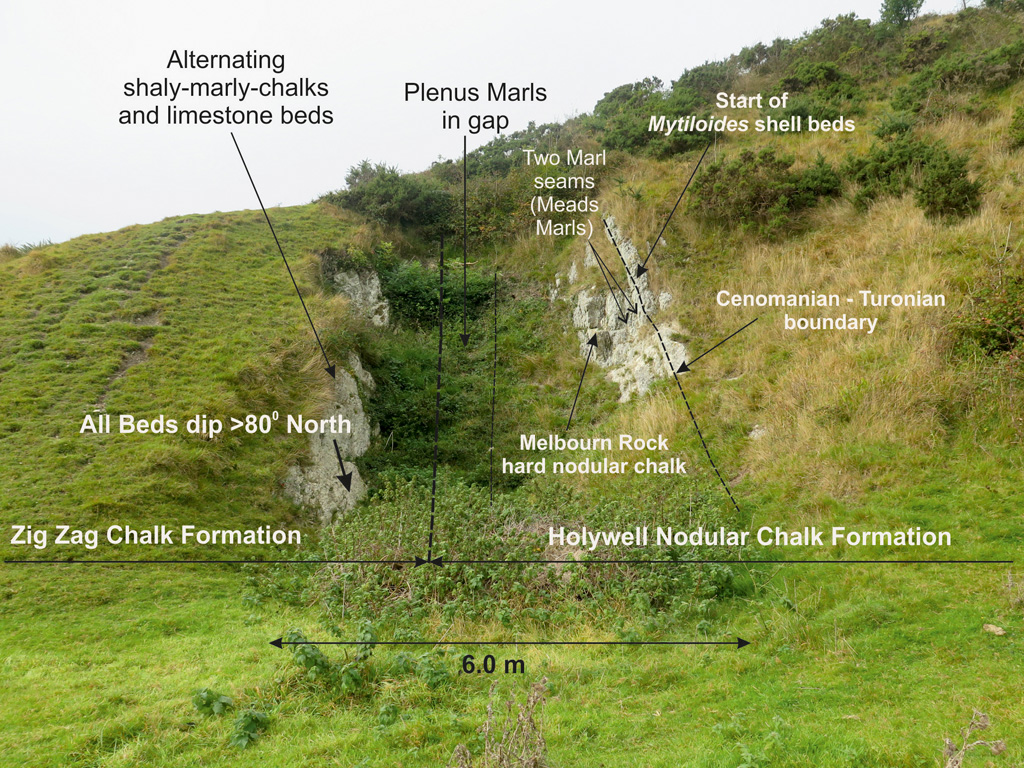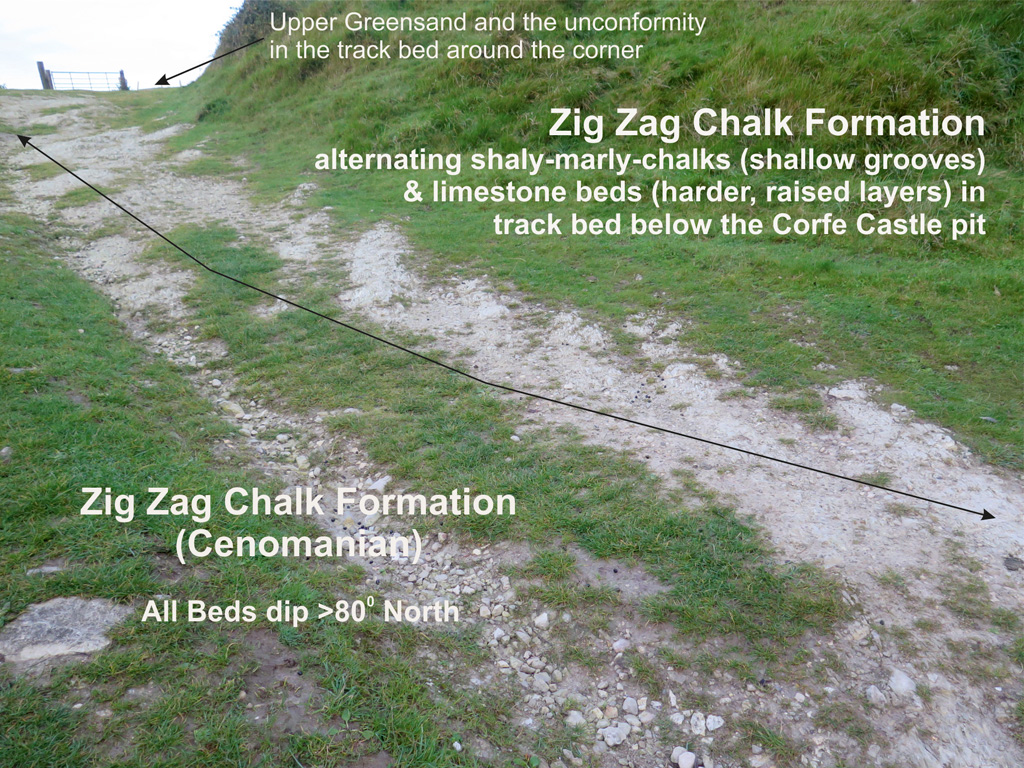West Hill Chalk Pit Corfe Castle, SY9565.8225


This site is important as it shows the boundary between the Cenomanian Zig Zag Chalk Formation which are to the left of the pit when you face it (to the west) and the Turonian Plenus Marls delineating the Cenomanian-Turonian boundary in the gully at the centre of the pit. To the right (east) of the pit the Turonian Melbourne Rock and the Holywell Grit Beds in the Holywell Nodular Chalk Formation are exposed.
The beds are all very steeply dipping around 80o degrees north.
The Cenomanian Zig Zag Formation (named after the steep hill south of Shaftesbury) is a grey chalk (in what was known as the lower chalk). No flints or fossils were found. “The upper surface of the Zig Zag Chalk formation is the bedding plane beneath the lowest of the marls in the Plenus Marls Member in the overlying Holywell Nodular Chalk Formation. (Note that the Plenus Marls Member is now considered as part of the overlying formation, thus providing a consistent datum throughout the Chalk Group of England and the North Sea).” http://www.bgs.ac.uk/lexicon
The Plenus Marls are mainly covered in vegetation and are much softer than the beds above and below and were more easily extracted for use in lime kilns
Above the Plenus Marls the chalk is greeny coloured due to chlorite again with no fossils. This is the Melbourne Rock member of the Turonian Holywell Nodular Chalk Formation. Above this are the hard nodular chalks with distinctive thin marls seams that can be used as markers throughout Southern Britain. Mytiloides fossil bivalves, indicative of the of the basal Holywell Grit Beds at the base of the Turonian can be found.
Information from Professor Rory Mortimer and Sheila Alderman.
